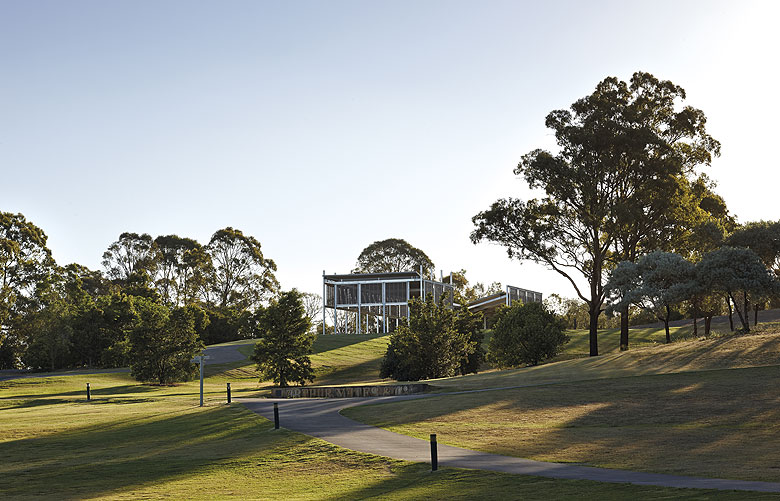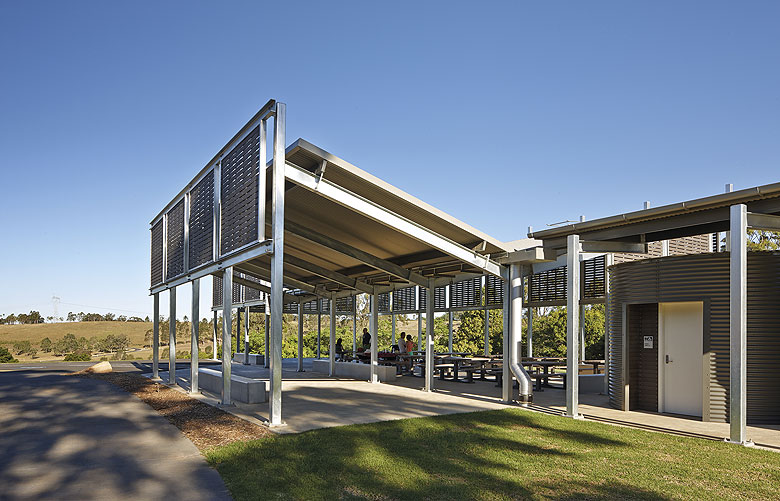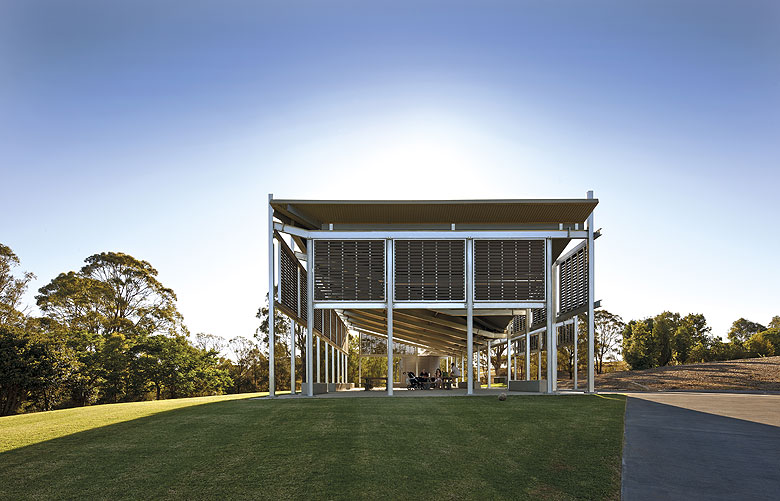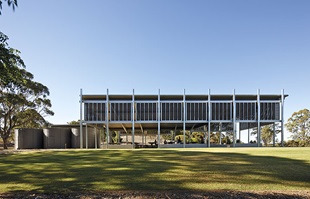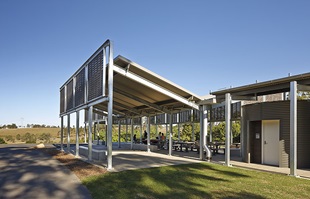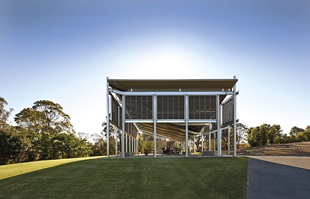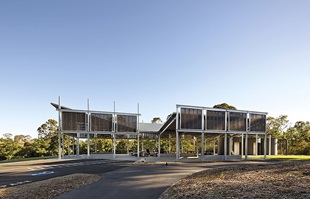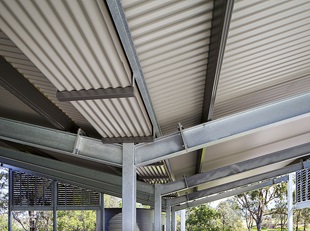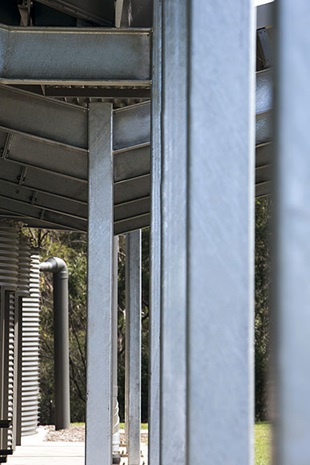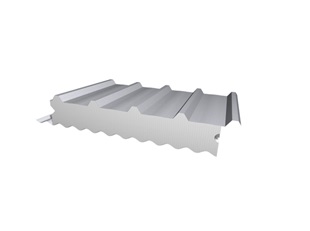AGL Lakeside Pavilion
Made famous by 18th century English landscape designer Lancelot ‘Capability’ Brown, follies enhance one’s enjoyment of the garden by improving vistas thanks to their careful placement among sculpted rolling hills and serpentine lakes.
Credentials
Client: The Australian Botanic Garden, Mount AnnanArchitect: Kennedy Associates
Location: Mt Annan, NSW
Project Team: Anthony Nolan, Steve Kennedy, Alisha Menezes, Vanessa Alves dos Santos, Trinity Woo, Christina Krane, Kris Schubertd
Builder: Zadro Constructions
Steel Fabricator and Shop Drawing Contractor: BRH Steel Constructions
Coatings: Hunter Galvanising
Metal Building Contractor: Bay and Coast Metal
Structural & Civil Engineer: Cardno
Project Timeframe: Three months to design, two months to document, about four months to build
Awards: 2014 Australian Steel Institute National Steel Excellence Award, Buildings – Small Project. WAF 2014 – Shortlisted in Civic and Community category
Size: 350m2
Cost: $650,000
While the tradition of placing follies in gardens didn’t translate readily to Australia, a new structure at the Australian Botanic Garden, Mount Annan, calls to mind those early garden ornaments.
The building is the AGL Lakeside Pavilion, and it heralds a new direction for the Garden.
In recent years, Kennedy Associates director Anthony Nolan and his fellow director Steve Kennedy have both noticed a touch of eighteenth-century English landscape architect, ‘Capability’ Brown, creeping into the Garden.
The architects opted to construct the entire Pavilion using steel, choosing the material for its crisp detailing, lightweight strength, speed of erection, and to minimise the number of trades on site. “One of the remarkable things about building with steel is that once the base is done, there’s a structure there and it’s often very dramatic,” Kennedy says. “In this case, there was just one week of steel work required on site.”
“Another reason for choosing steel was that it required no bracing, so there are no barriers to entry at ground level – nothing to impede access from all four sides – which allows the building to engage more fully with the Garden,” Nolan adds.
While the use of steel gives the building an honest, almost agricultural aesthetic. Kennedy says it helped to reveal and nurture the building’s own willful character.
This is a raw muscular shed, where nothing is hidden, nothing is covered and nothing is painted. Even though there is an incredibly rigorous geometry – which includes a double ridge in the roofline so that the building presents faces on multiple sides – there is a sense of quirkiness, too.
“In one sense the building is very geometrical, very symmetrical and very formal, and yet at the same time the structure is just doing what it wants to do,” Kennedy continues. “Some of the column lines shift and step sideways, which allowed a beam to do its job. We’ve made a virtue of that quality throughout the design by exposing it all, and letting the building dictate to us where we could put things.”
Nolan originally set out the building around the dimensions of a 200-person marquee, and the ghost of a tent-like structure can be read in its slender steel 150mm SHS columns and 200mm UB Roof Beams covered with a thin and lightweight roof. Nolan specified Ritek Ecotek™ Roof Panel 130mm made from COLORBOND® steel, in the colour Bushland® on both sides, for the roof.
“The edges of the roof are thin and they cantilever away from the structural steel frame, and we couldn’t have achieved that cantilever with any other material of that thinness without a lot of extra structural support,” Nolan says.
A box gutter runs through the centre of the building collecting water for storage in the adjacent ‘tanks’ – also clad in LYSAGHT CUSTOM ORB® profile made from COLORBOND® steel in the colour Woodland Grey® (two contain toilets, one holds water). Made from COLORBOND® steel and completely exposed underneath, the box gutter exemplifies the project’s exquisite detailing of modest materials.
“I’m quite proud of the box gutter because it is completely exposed, every piece of it including the purlins and beams that support it is exposed,” Nolan says. “That’s been one of the triumphs: the detailing is so robust that the agricultural character of that gutter is not out of place.”
Both Kennedy and Nolan are full of praise for the construction team that brought their vision to life. “The builder and steel fabricator were excellent; everything is crisp and how we wanted it to be,” Kennedy says.
“They produced 34 steel fabrication drawings after I had developed the design extensively in 3D and CAD – that was the only way we could strip the structure back as we’ve done, and accept those various kinks,” Nolan adds.
Whereas most follies served little practical purpose, the Pavilion provides a welcoming place to sit and socialise, with the added benefit of being able to enjoy expansive views of the sculpted landscape from within its sheltered enclosure.

